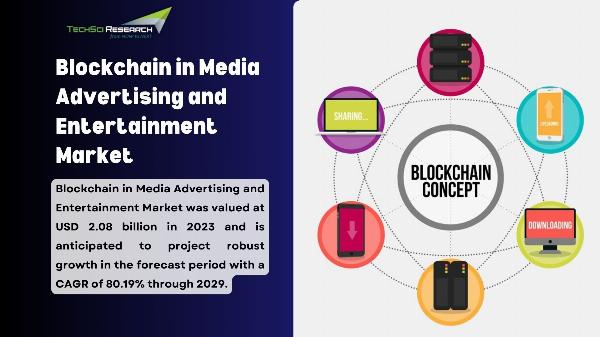 Social Media Content Packs – Stay Active Without Lifting a Finger!
Social Media Content Packs – Stay Active Without Lifting a Finger!
Understanding DeFi: Transforming Finance with Blockchain
Written by CoinW » Updated on: June 17th, 2025

Decentralized Finance (DeFi) represents a fundamental shift in the way we access and interact with financial services. Built on blockchain technology, DeFi eliminates traditional intermediaries like banks and brokers, empowering individuals to take control of their financial activities. From lending and borrowing to trading and earning interest, DeFi has opened the door to a borderless, transparent, and decentralized financial ecosystem.
This article delves into the key components, benefits, and risks of DeFi while exploring how it is reshaping traditional financial systems. Whether you’re new to DeFi or looking to deepen your understanding, this comprehensive guide will provide you with valuable insights.
What is Decentralized Finance (DeFi)?
DeFi is a term used to describe a wide range of financial services that are accessible through blockchain networks, primarily Ethereum. Unlike traditional finance, where banks and institutions serve as gatekeepers, DeFi operates without centralized control. Instead, it leverages smart contracts—self-executing agreements written into code—to enable seamless and secure peer-to-peer transactions.
Why Does DeFi Matter?
DeFi matters because it democratizes access to financial services. In traditional systems, opening a bank account, securing a loan, or trading assets often requires meeting strict criteria and navigating bureaucracy. DeFi removes these barriers, offering anyone with an internet connection the ability to participate in financial activities.
Moreover, DeFi provides unprecedented transparency. Transactions are recorded on public blockchains, allowing anyone to verify and track them. This reduces the risk of fraud and corruption while fostering trust within the system.
Key Components of DeFi
DeFi’s ecosystem comprises several innovative components that work together to create a robust and versatile financial landscape. These include decentralized exchanges, lending and borrowing protocols, stablecoins, and yield farming mechanisms.
Decentralized Exchanges (DEXs)
Decentralized exchanges (DEXs) are platforms that facilitate peer-to-peer trading of cryptocurrencies without relying on intermediaries. Unlike centralized exchanges, DEXs enable users to trade directly from their wallets, offering enhanced privacy and control.
Platforms like Uniswap and PancakeSwap are popular examples of DEXs. They use liquidity pools, where users deposit their tokens to facilitate trading. In return, liquidity providers earn a portion of the transaction fees. For instance, if you’re trading UNI tokens, you can monitor their performance against stablecoins such as USDT with UNI USDT trading pair.
Lending and Borrowing Protocols
Lending and borrowing are among the most prominent use cases of DeFi. Platforms like Aave and Compound allow users to lend their cryptocurrencies to others and earn interest or to borrow assets by providing collateral. The process is governed by smart contracts, ensuring security and efficiency.
Borrowers benefit from flexible terms and immediate access to funds, while lenders earn passive income on their idle assets. This disintermediated approach eliminates the need for credit checks or third-party approval.
Stablecoins
Stablecoins play a critical role in the DeFi ecosystem by addressing the volatility of cryptocurrencies. These are digital assets pegged to stable assets like the US dollar or gold. Popular examples include USDT, DAI, and USDC.
Stablecoins are widely used for transactions, savings, and lending within DeFi platforms. They act as a bridge between volatile cryptocurrencies and traditional fiat currencies, making DeFi more accessible and user-friendly.
Yield Farming and Liquidity Mining
Yield farming and liquidity mining involve earning rewards by providing liquidity to DeFi protocols. Users deposit their tokens into liquidity pools, and in return, they receive additional tokens or interest.
While yield farming offers high returns, it also comes with risks such as impermanent loss and smart contract vulnerabilities. For seasoned investors, these mechanisms provide an opportunity to maximize earnings in the DeFi space.
Benefits of DeFi
DeFi’s appeal lies in the numerous benefits it offers over traditional finance. By leveraging blockchain technology, DeFi delivers a more inclusive, transparent, and efficient financial system.
Accessibility
One of the standout advantages of DeFi is its accessibility. Traditional financial services are often limited by geography, documentation, and credit history. DeFi removes these barriers, enabling anyone with an internet connection and a digital wallet to participate.
This inclusivity is particularly impactful in regions with limited access to banking services. DeFi empowers individuals in underserved areas to save, invest, and transact without relying on traditional institutions.
Transparency
Transparency is a cornerstone of DeFi. Transactions are recorded on public blockchains, making them immutable and verifiable. This openness reduces the risk of fraud, corruption, and mismanagement.
Moreover, DeFi protocols operate using open-source code, allowing developers and users to inspect and audit them. This fosters trust and accountability within the ecosystem.
User Control
DeFi returns control to the user. In traditional finance, banks and institutions act as custodians of funds, often imposing restrictions and fees. DeFi allows individuals to maintain custody of their assets, ensuring they have full control over their financial decisions.
Efficiency and Innovation
By automating processes through smart contracts, DeFi eliminates the inefficiencies of traditional finance. Transactions are faster, fees are lower, and the need for intermediaries is minimized. This efficiency paves the way for innovation, with new financial products and services being developed at an unprecedented pace.
Risks and Challenges in DeFi
While DeFi offers numerous advantages, it is not without risks. Understanding these challenges is crucial for anyone looking to participate in the DeFi ecosystem.
Security Vulnerabilities
DeFi platforms rely heavily on smart contracts, which, if poorly written, can be exploited by hackers. High-profile incidents have resulted in significant financial losses, highlighting the need for robust security measures.
Market Volatility
Cryptocurrencies are notoriously volatile, and this volatility extends to DeFi. The value of tokens can fluctuate dramatically, posing risks to investors and participants.
Regulatory Uncertainty
The regulatory environment for DeFi is still evolving. Governments and financial authorities are grappling with how to regulate decentralized systems, creating uncertainty for developers and users alike.
User Responsibility
DeFi places the onus of security and management on the user. Losing private keys or falling victim to scams can result in irreversible losses. This heightened responsibility requires users to be vigilant and well-informed.
The Future of DeFi
The future of DeFi is bright, with continuous innovation driving its growth. Emerging trends such as cross-chain interoperability, decentralized identity, and tokenized real-world assets are expanding the possibilities of DeFi.
Moreover, traditional financial institutions are beginning to recognize the potential of DeFi. Collaborations between centralized and decentralized systems could lead to a hybrid financial model, blending the best of both worlds.
As DeFi matures, addressing its challenges—particularly security and regulatory compliance—will be critical to ensuring its long-term success.
Conclusion
DeFi is revolutionizing the financial sector by providing a decentralized, transparent, and accessible alternative to traditional finance. Its innovative use of blockchain technology has opened the door to new opportunities while empowering individuals to take control of their financial futures.
However, with great potential comes significant responsibility. Understanding the benefits and risks of DeFi is essential for anyone looking to engage with this transformative ecosystem. By staying informed and adopting best practices, users can harness the power of DeFi to participate responsibly in the financial revolution.
Note: IndiBlogHub features both user-submitted and editorial content. We do not verify third-party contributions. Read our Disclaimer and Privacy Policyfor details.
Copyright © 2019-2025 IndiBlogHub.com. All rights reserved. Hosted on DigitalOcean for fast, reliable performance.













